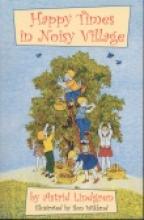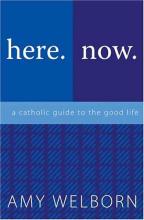No name
Happy Birth Day!
Happy Times in Noisy Village
Haystack Full of Needles
Helena
Part of Loyola Classics Series
Henle Latin, First Year
Henle's First Year Latin is the book I studied as a homeschooled high schooler under the care of a great old Jesuit priest who left his position as a Latin and Greek professor at the all-boys Jesuit high school for a few hours each week to teach Latin to a small group of homeschoolers.
This is a very straightforward, but reasonably engaging text that focuses on a vocabulary list that will allow students to begin to read the works of Caesar in the Second Year. The real strength of this text is that it teaches the grammar in a way that provides students with the thinking and learning skills that are the hallmark of the study of Latin. (This is, of course, useful, even if the students don't go on to Henle II.) As a student, I complained a bit about the numerous stories involving soldiers and dead bodies, but I really enjoyed the course and was grateful for the jump-start in Latin before the more intense Latin studied at Thomas Aquinas College.
I like the way the text is broken up into two books - a Grammar book which lays out all the noun and verb endings, grammar rules and other basic stuff that will be useful through all four years of Latin; and the text itself which is much less intimidating when broken up in this fashion.
Overall, compared to other Latin texts I've used, this program seems particularly balanced in not being too overwhelming, but also not holding back on giving you enough of the big picture to make things clear. Also, the vocabulary is presented in an organized and logical fashion. To explain more fully, I quote from the preface: "It is rather common practice in Latin textbooks to set down a limited vocabulary for mastery, but to employ many more words in the reading material. First Year Latin limits its vocabulary for use largely to its vocabulary for mastery, and this vocabulary, incidentally, is drawn largely from the Caesar readings that will be taken in second year." I think this makes for a more useful, user-friendly text, particularly for families who are new to Latin.
Despite the emphasis on Caesar, this is a Catholic text and offers quite a bit of exercises and vocabulary relating to the faith. It would still be beneficial, however, to supplement the text with Latin hymns (from sources such as Lingua Angelica and The Adoremus Hymnal) and prayers.
Laura Berquist has written a syllabus/study guide for the Henle Latin which can be purchased from Emmanuel Books. Seton Home Study offers a Henle Latin course which includes lesson plans and telephone assistance from a Latin teacher. There is also a support-group e-mail list for those studying Henle Latin.
here.now. a catholic guide to the good life
The world claims to have the answers, but what are they? Please yourself, answer to no one, claim your truth, reject any close-minded or intolerant positions, be tolerant and diverse and accepting of other truths, whatever they are, except if they are intolerant.
If these are the answers, what are the questions?
When young people ask themselves:
- Who am I?
- What do I want out of life?
- Why is everything so complicated?
- Where will I find true happiness? and
- How do I choose right from wrong in a world filled with so many different answers?
they want the truth, even if it is challenging.
Amy Welborn has written here.now. as a guide book for today's young people, Catholic and Christian. Welborn's style is light, breezy, funny and pointed: the truth is found in the Catholic Church, and if you don't understand why, it's simple: Because Jesus told us so.
She continuously rejects answers such as, "because there is a rule that says..." or "because the Church said so." Welborn reminds us that it's not about "have to" (as in "I have to go to Mass today", or "will I have to confess this sin?") She continues to bring us back to the thought that if we want to have a relationship with God, we can do it best by getting to know His Son, Jesus, and we figure out Jesus best by reading the Bible, going to Church, and receiving the sacraments. It's that simple.
I was prepared to find this book too simplistic, too small. It is a very thin book, only 118 pages with short paragraphs and an easy-to-read type face. However, I found myself totally absorbed in it, able to quickly understand it, and even came away from it with some easier ways to talk about the faith with my relatives and friends.
I think this book would be good for older teens ("mature" 14 or 15 and up, due to the chapter on morals) and young adults to read as an overview of our faith.
This would be a great gift for a confirmand, a fallen-away Catholic, a lukewarm relative, or any person who needs to figure out how to be a mature, adult Catholic in this Church. It is perfect for anyone who might not read something more in depth. I think this book serves a great purpose in being a short and brief but thorough description of the good life: life as a Catholic in full communion with Jesus though his church.
Heritage Memo Game
A memory game showing 36 pictures of outstanding sites worldwide.
While looking for something fun to add to this year's curriculum purchases, I discovered this memory game in the Montessori Services catalog. I can't tell you how much fun we've had with it. The whole family down to the 2 1/2 year old have enjoyed rousing games of memory while learning about important historical, cultural and religious sites from around the world. The cards are approximately 2 inches square with full color pictures of famous sites. There are a high percentage of Catholic sites:
Cathedral of Aachen, Germany
Palace of the Pope, Avignon France
Chartres Cathedral, France
Cathedral of Cordoba, Spain
Cathedral and Monastery "Victorious Holy Maria" in Portugal
Cathedral of Cefalu in Sicily
Church of Sagrada Familia, Spain
Reims Cathedral, France
Santiago de Compostela Cathedral, Spain
Other sites are:
Dome of the Rock, Jerusalem
Stonehenge, Great Britain
St. Basil's Cathedral, Moscow
Cathedral of Canterbury, Great Britain
Nemrut dagi, Turkey
Easter Island, South America
Temple of Katmandu, Nepal
Schwe-Dagon-Pagode, Birma
Stupa of Borobudur, Indonesia
Todaidshi-Temple, Japan
Amun-Temple, Karnak Egypt
Uxmal, Mexico
Madrese Schir-Dar, Russia
Tula, Mexico
Taj Mahal, India
Temple of Abu Simbel, Egypt
Hagia-Sofia, Turkey
Maccu Picchu, Peru
Acropolis, Athens
Sphinx and Great Pyramid
Wailing Wall, Jerusalem
Menhirs of Carnac, France
Temple of Hera, Italy
Leaning Tower of Pisa, Italy
Athos-Monasteries, Greece
Malawiya Minaret, Iraq
Schah-Mosque, Iran
Included with the game is a fold-out sheet with black and white images of each of the sites along with a brief description and location.
72 cards, Made in Austria
Herodotus and the Road to History
Donated for review by Bethlehem Books.
Heroes of God's Church
I think the author does an admirable job in achieving his purpose. We are shown how the Saints were real people who struggled with things like bad tempers and parents who just didn't understand their religious fervor. Some became great saints by just doing the little everyday things well and out of love while others showed incredible heroism through the most agonizing tortures and martyrdom.
The book covers 25 Saint stories, from 6 to 18 pages each, with comprehension questions for each story. We are presented with a variety of Saints of every age with a true diversity of personalities, difficulties to overcome and social classes. The chronological order and selection would also make this a very worthwhile supplement to a study of World History.
The comprehension questions seem suited to mid-grade school (perhaps grades 3-6) but the stories themselves would be appropriate for a wide age range (probably from first grade through adult if care is taken with regard to some of the "scarier" martyr stories for the very young ones).









